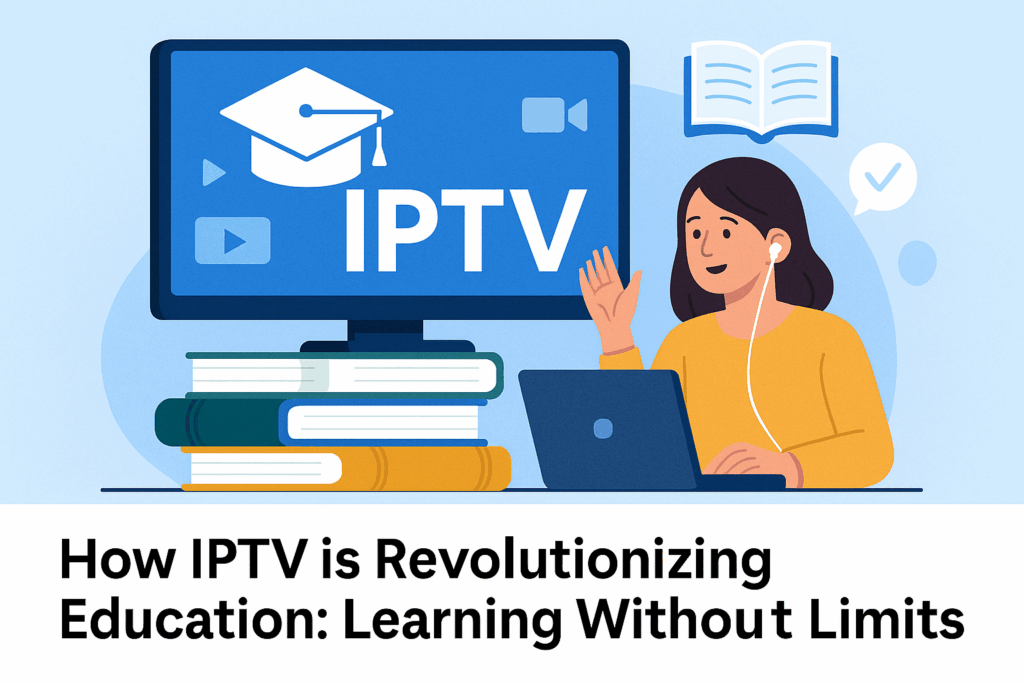
The landscape of education is undergoing a profound transformation. Gone are the days when learning was confined to physical classrooms and printed textbooks. In 2025, IPTV (Internet Protocol Television) is emerging as a disruptive force in the education sector—making learning more accessible, interactive, and personalized than ever before. But how exactly is IPTV reshaping the way we learn? And what does it mean for students, educators, and institutions worldwide?
What is IPTV in the Context of Education?
IPTV refers to the delivery of television content over the internet instead of traditional terrestrial, satellite, or cable formats. In education, IPTV enables the streaming of live or pre-recorded lessons, tutorials, lectures, and other learning content directly to any internet-enabled device.
Instead of static videos on platforms like YouTube, IPTV in education can offer a highly structured and secure way to distribute curated, real-time learning experiences—sometimes even replacing traditional Learning Management Systems (LMS).
Key Benefits of IPTV for Education
- On-Demand Learning
IPTV empowers students to access lessons at their own pace. Whether they’re in a different time zone or need to revisit a complex topic, IPTV offers flexibility that traditional classrooms simply can’t. - Live Interactive Sessions
Through IPTV’s live streaming capabilities, teachers can conduct virtual classrooms with real-time engagement—polls, Q&A, and chat functions. This helps bridge the gap between online and in-person learning. - Scalability for Institutions
Whether it’s a small school or a large university, IPTV allows the institution to scale educational content delivery across hundreds or thousands of students simultaneously without additional infrastructure. - Cost Efficiency
IPTV eliminates the need for printed materials, physical classrooms, or expensive satellite equipment. All a student needs is an internet connection and a device. - Custom Channels and Courses
Schools or universities can create their own IPTV channels for different departments or classes. Think of it as Netflix, but for your education—each student gets a customized catalog of learning content.
Real-World Use Cases in 2025
- Universities are now offering hybrid courses where IPTV is used to stream lectures directly to enrolled students while also archiving them for future reference.
- Language learning platforms use IPTV to provide live one-on-one or group sessions, mimicking the real classroom experience.
- Corporate training programs have adopted IPTV to deliver onboarding and upskilling content to employees around the globe.
- Developing countries are implementing IPTV education initiatives to bridge the gap in access to quality teaching, especially in remote areas.
Enhanced Engagement with AI-Powered Personalization
In 2025, IPTV is being integrated with AI to analyze student behavior and preferences. This means content can be tailored based on learning style, progress, and performance. For example:
- A student who struggles with math may be served simpler tutorials first.
- A visual learner may receive more infographic or animation-rich content.
- Advanced learners might unlock bonus modules or real-time mentoring sessions.
This level of personalization boosts engagement and retention significantly.
Security and Access Control
One major concern in online education is content piracy and unauthorized access. IPTV platforms built for education feature strong encryption and user access control mechanisms, ensuring that only enrolled students can view premium content.
Moreover, schools can use geofencing or user authentication to comply with licensing rules or regional restrictions.
Challenges and Limitations
Like any technology, IPTV in education has its own set of hurdles:
- Internet Dependency: In areas with poor connectivity, access to IPTV content can be limited.
- Initial Setup Costs: Institutions might need to invest in proper streaming infrastructure or platforms.
- Digital Literacy: Both teachers and students must be trained to make full use of IPTV’s features.
Despite these challenges, the benefits often outweigh the limitations, especially when combined with complementary technologies like cloud computing, AI, and 5G.
Future Outlook: What’s Next for IPTV in Education?
As IPTV continues to mature, we can expect:
- Virtual Classrooms in VR: Merging IPTV with virtual reality to create immersive educational experiences.
- 24/7 Tutor Streams: AI-powered IPTV channels that provide round-the-clock assistance.
- Blockchain for Certification: IPTV platforms offering accredited courses with blockchain-secured certificates.
Conclusion
IPTV is not just transforming the entertainment world—it is becoming a cornerstone of modern education. With its potential to democratize learning, enhance engagement, and personalize content, IPTV is helping students learn beyond the walls of traditional classrooms. In 2025 and beyond, the question isn’t if IPTV will reshape education, but how fast institutions will adapt to it.
